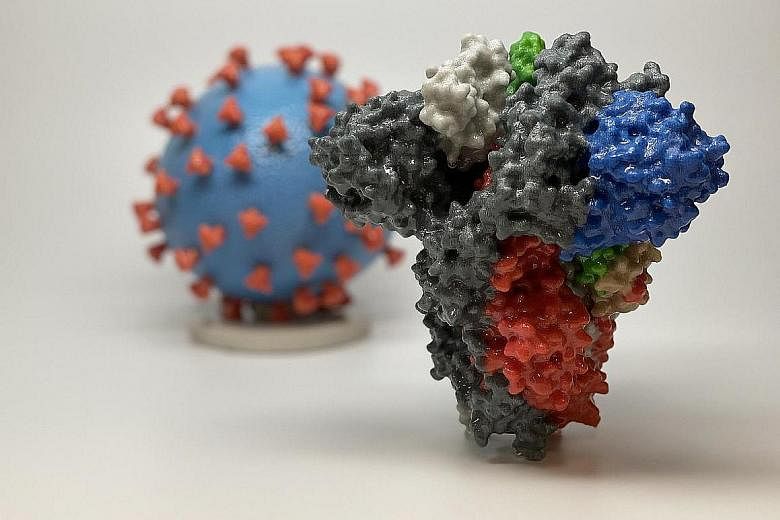NEW YORK • For months, scientists have debated why one genetic variation of the coronavirus became dominant in many parts of the world.
Many scientists argued that the variation spread widely by chance, multiplying outward from explosive outbreaks in Europe.
Others proposed the possibility that a mutation gave it some kind of biological edge and have been urgently investigating the effect of that mutation.
Now scientists have shown - at least in the tightly controlled environment of a laboratory cell culture - that viruses carrying that particular mutation infect more cells and are more resilient than those without it.
Geneticists cautioned against drawing conclusions about whether the variant, which has been circulating widely since February, spreads more easily in humans.
There is no evidence that it is more deadly or harmful, and differences seen in a cell culture do not necessarily mean it is more contagious, they said.
But the new study, which has not yet been peer-reviewed, does show that this mutation appears to change the biological function of the virus, experts said.
The insight could be a crucial first step in understanding how the mutation behaves at a biomolecular level.
Researchers at Scripps Research, Florida, found that the mutation, known as D614G, stabilised the virus's spike proteins, which protrude from the viral surface and give the coronavirus its name.
The number of functional and intact spikes on each viral particle was about five times higher because of this mutation, they found.
These spike proteins must attach to a cell for a virus to infect it.
As a result, the viruses with D614G were far more likely to infect a cell than viruses without that mutation, according to the scientists who led the study, Dr Hyeryun Choe and Dr Michael Farzan.
"Viruses with more functional spikes on the surface would be more infectious," Dr Farzan said.
"And there are very clear differences between the two viruses in the experiment."
Dr Choe, the senior author on the paper, said that the virus spikes with the mutation were "nearly 10 times more infectious in the cell culture system that we used" than those without that same mutation.
Mutations are tiny, random changes to viral genetic material that occur as it is copied.
Virologists shown the study said that the Scripps research was a strong demonstration that this specific mutation does indeed cause a significant change in how the virus behaves biologically.
"This is a powerful experimental study and the best evidence yet that the D614G mutation increases the infectivity of Sars-CoV-2," said Dr Edward Holmes, a professor at the University of Sydney and a specialist in viral evolution.
The mutation the researchers studied has predominated in Europe and in much of the United States, especially in the north-east.
They compared it with viruses without that mutation, like those found at the beginning of the pandemic in Wuhan, China.
Dr Choe said that the results do suggest that biological factors played a role in the rapid spread of the D614G virus. "This mutation may explain the predominance of viruses carrying it," Dr Choe said.
But other scientists cautioned that it would take significantly more research to determine if differences in the virus were a factor in shaping the course of the outbreak.
Other factors clearly played a role in the spread, including the timing of lockdowns, travel patterns and luck, scientists argue.
Dr Kristian Andersen, a geneticist at Scripps Research, La Jolla, California, said that analyses of D614G and other variants in Washington and California had so far found no difference in how quickly or widely one variant spread over another.
"That's the main reason that I'm so hesitant at the moment," Dr Andersen said. "Because if one really was able to spread significantly better than the other, then we would expect to see a difference here, and we don't."
NYTIMES

